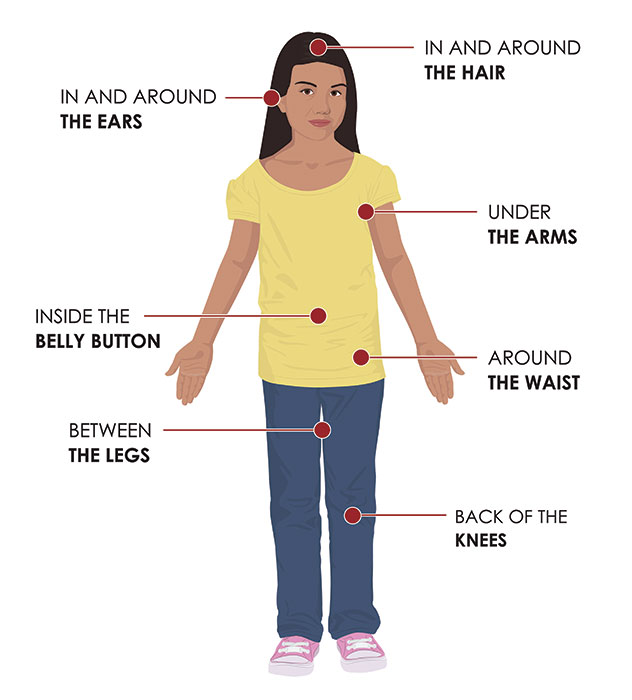
Cicadas have been getting all the buzz this season with their big emergence after 17 years, but another insect is experiencing an uptick in its population. With the warm, wet weather early this spring, we are seeing a boom in the tick population here in Michigan.
Where do ticks live?
When visiting grassy, bushy or wooded areas, you can expect to find ticks. You may also find them in your backyard if you live close to areas like this or in places where there are animals. Activities like walking outside with your dog, gardening and hunting can expose you and your family to ticks.
How do I avoid ticks?
- When possible avoid wooded and bushy areas with high grass or leaf litter
- Walk in the center of trails and don’t veer off paths into the woods
- Treat clothing or exposed skin with insect repellents when venturing into areas where ticks may be present. The Environmental Protection Agency (EPA) provides a list of registered insect repellents to help you find the product that best suits your needs: https://www.epa.gov/insect-repellents/find-repellent-right-you Always follow product instructions. Do not use products containing OLE or PMD on children under 3 years old.
- Animals may also bring ticks into your home. Be sure to use tick repellant on your dogs and cats too. There are many tick treatments available including collars, oral medications and topical medications.
What should I do when I come inside?
If you’ve been outside walking or working in an area that may have ticks, there are a few things you can do when you come in to help avoid a tick bite.
Check your clothing for ticks. Ticks may be carried into the house on clothing. Any ticks that are found should be removed. Tumble dry clothes in a dryer on high heat for 10 minutes to kill ticks on dry clothing after you come indoors. If the clothes are damp, additional time may be needed. If the clothes require washing first, hot water is recommended. Cold and medium temperature water will not kill ticks.
Examine gear and pets. Ticks can ride into the home on clothing and pets, then attach to a person later, so carefully examine pets, coats, and daypacks.
Shower soon after being outdoors. Showering within two hours of coming indoors has been shown to reduce your risk of getting Lyme disease and may be effective in reducing the risk of other tickborne diseases. Showering may help wash off unattached ticks and it is a good opportunity to do a tick check.
Check your body for ticks after being outdoors. Conduct a full body check upon return from potentially tick-infested areas, including your own backyard. Use a hand-held or full-length mirror to view all parts of your body. Check these parts of your body and your child’s body for ticks:
- Under the arms
- In and around the ears
- Inside belly button
- Back of the knees
- In and around the hair
- Between the legs
- Around the waist

What is the best tick repellant?
The CDC recommends using Environmental Protection Agency (EPA)-registered insect repellents external icon containing DEET, picaridin, IR3535, Oil of Lemon Eucalyptus (OLE), para-menthane-diol (PMD), or 2-undecanone. Remember always follow product instructions. Do not use products containing OLE or PMD on children under 3 years old.
What are the risks of a tick bite?
The most common disease spread by ticks is Lyme Disease. According to the Centers for Disease Control, symptoms often include “fever, headache, fatigue and a characteristic skin rash called erythema migrans. If left untreated, infection can spread to joints, the heart and the nervous system.”
While there are many other tick-borne illnesses, many of them are not common in the state of Michigan. If you plan to travel visit https://www.cdc.gov/ticks/tickbornediseases/overview.html to know what to look for if you experience a tick bite in other parts of the country.
What should you do if you find a tick attached to your skin?
If you find a tick attached to your skin, there’s no need to panic—the key is to remove the tick as soon as possible. There are several tick removal devices on the market, but a plain set of fine-tipped tweezers work very well.
How to remove a tick:
- Use fine-tipped tweezers to grasp the tick as close to the skin’s surface as possible.
- Pull upward with steady, even pressure. Don’t twist or jerk the tick; this can cause the mouth-parts to break off and remain in the skin. If this happens, remove the mouth-parts with tweezers. If you are unable to remove the mouth easily with clean tweezers, leave it alone and let the skin heal.
- After removing the tick, place it on a plain background and take a photo of it. It helps to have a photo of the actual tick that bit you to show your healthcare provider, in the event you develop symptoms of a tick-borne illness.
- Thoroughly clean the bite area and your hands with rubbing alcohol or soap and water.
- Never crush a tick with your fingers. Dispose of a live tick by putting it in alcohol, placing it in a sealed bag/container, wrapping it tightly in tape, or flushing it down the toilet.
Source: Centers for Disease Control (CDC)
What should you do if you develop symptoms of a tick-borne illness?
If you develop a rash or fever within several weeks of removing a tick, make an appointment with your primary care or pediatric healthcare provider. Be sure to tell the doctor about your recent tick bite, when the bite occurred, and where you most likely acquired the tick. If you were able to take a photo of the tick that bit you, be sure to share that with your provider as well.
Print this handout from the CDC to keep in your car or on your refrigerator for a quick tick refresher.
